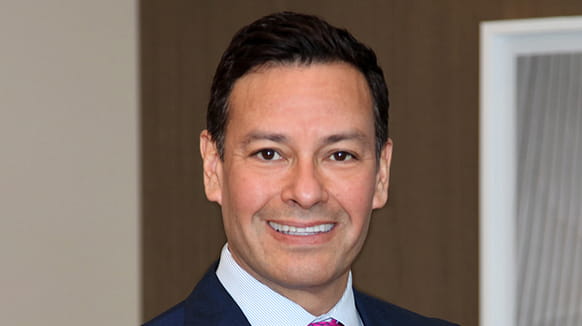This year has already been a busy one for seismic activity. In the first weeks of 2018 alone, there have been reports of a 7.9 magnitude quake off the shores of Kodiak, Alaska, a 6.2 magnitude temblor in Japan, and a series of tremors in California. And, few will forget the catastrophic earthquakes that struck Mexico City and the Iraq-Iran border last year. With this recent domestic and international seismic activity and predictions of more to come,1 some corporate policyholders will ask the question: what insurance coverage is available to protect against property damage and business interruption loss from earthquakes?
While insurance terms and conditions may vary by region and from one policyholder to another, generally speaking, “all-risk” commercial property policies insure all non-excluded direct physical loss or damage to covered property. As a general proposition, many such policies may include exclusions for loss or damage resulting from “earth movement.” But many other policies identify “earthquakes” or “earth movement” among expressly insured perils along with “floods” or “named windstorms,” which coverage may be subject to specific sublimits or deductible terms.
For those policyholders currently without “earthquake” coverage but seeking to add this as an insured risk, and for those already covered for earthquake-related damage, here are four key issues to consider in the year ahead:
- Distinguishing “Occurrences.” Commercial property policies are typically triggered by an “occurrence” of physical loss or damage. Generally, an “occurrence” is defined as any one loss or event, or a series of losses or events arising out of a single cause, including all resulting losses. In the context of a flood, a windstorm, or an earthquake, policy terms may also limit the “occurrence” to the events occurring within a single 72-hour period. For a significant earthquake, however, damaging aftershocks may continue for substantially more than 72 hours after the mainshock. Occasionally, the existence of multiple “occurrences” may benefit the insured by opening access to additional limits or providing a basis to isolate the effect of policy exclusions potentially applicable to one “occurrence,” but not another. However, a finding that there is more than “occurrence” may also implicate more than one deductible or other self-insured obligation. In order to avoid disputes over the number of “occurrences” implicated by an earthquake, corporate policyholders and insurers alike should carefully consider whether existing terms defining the boundaries of an “occurrence” are appropriate or whether alternative terms are needed to address the particular losses that may arise out of a single earthquake with potentially long-term aftershocks.
- Deductibles & Total Insured Values. Where “earthquake” or “earth movement” coverage is specifically addressed through sublimits, many commercial property policies will also include separately defined deductible or coinsurance terms. These self-insured obligations will usually be expressed as some percentage of the “total insured value” of the property at each covered location implicated by the “occurrence” at issue. Because the self-insured portion of a future claim will directly depend on the values recorded for the insured’s property, it is critically important to ensure that the valuations are accurate and up to date. Corporate policyholders and their brokers or other insurance professionals should ensure that the statement of values for covered locations, which will ultimately forms the basis for determining the policyholder’s coinsurance or deductible, is current and correct.
- Limiting “Earth Movement” Exclusions. Not every policy will or practically could have express coverage for “earthquakes.” For those policies that contain exclusions for “earth movement,” corporate policyholders should ensure that such exclusions include ensuing loss provisions preserving coverage for specified perils arising from earth movement, such as fire, explosion or theft. Doing so may allow the insured to pursue coverage for ensuing losses from such events involving the policyholder’s own covered property. Moreover, identifying named perils in an ensuing loss provision may also enable the insured to assert that related provisions potentially implicated in an earthquake afford coverage where facts and circumstances allow. Policy terms addressing service interruption, ingress/egress, or civil authority coverages, for example, are usually contingent on business interruption arising from a “covered cause of loss” to other property. Including appropriate ensuing loss limitations in an “earth movement” exclusion may expand the benefit provided by these auxiliary time element coverages when business interruption results from fire, explosion or theft ensuing from an earthquake.
- Contingent Business Interruption Coverage. Even in a year with predictions of increased seismic activity, most insureds can expect to avoid direct damage to property from an earthquake. However, the number of insureds that will avoid indirect impacts to business operations may be substantially less. In a world of technological and economic interdependency, an earthquake causing loss or damage to clients or suppliers in one region may cause business interruption loss to policyholders in another region far removed from the physical loss or damage around the epicenter of the quake. As with other risks, policyholders should consider including contingent business interruption coverage to protect against the wider economic impact that a major earthquake may have on insured operations.
Because earthquakes will inevitably occur in 2018 and beyond, corporate insureds—especially those in earthquake-prone regions—may do well to accelerate their review and expansion of policy terms to address this risk. By giving due consideration to the items listed above, policyholders may be able to enhance insurance coverage for earthquake-related loss and damage. If you have any questions about insurance coverage for loss or damage resulting from earthquakes or about commercial property insurance coverage in general, please contact one of Haynes Boone’s Insurance Coverage Practice Group partners listed below.





